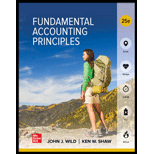
1.
Introduction:
Step-down method: The overhead costs of supporting incurred by the supporting department are allocated to other supporting departments and also the operating department based on the allocation base.
Allocation of the service department’s cost to the consuming department and the predetermined overhead rates in the operating department.
2.
Introduction:
Direct method: Under the direct method, the overhead costs incurred by the supporting department are directly allocated to the operating department.
Allocation of the service department’s cost to the consuming department using the direct method and the predetermined overhead rate.
3.
a.
Step-down method: The overhead costs of supporting incurred by the supporting department are allocated to other supporting departments and also the operating department based on the allocation base.
The amount of overhead cost for the job using overhead rates computed in parts 1 and 2.
3.
b.
Step-down method: The overhead costs of supporting incurred by the supporting department are allocated to other supporting departments and also the operating department based on the allocation base.
The reason the step-down method is a better base for computing the predetermined rates than the direct method.
Want to see the full answer?
Check out a sample textbook solution
Chapter 5 Solutions
FUND.ACCT.PRIN.
- Principles of Accounting Volume 1AccountingISBN:9781947172685Author:OpenStaxPublisher:OpenStax College
 Cornerstones of Financial AccountingAccountingISBN:9781337690881Author:Jay Rich, Jeff JonesPublisher:Cengage Learning
Cornerstones of Financial AccountingAccountingISBN:9781337690881Author:Jay Rich, Jeff JonesPublisher:Cengage Learning Intermediate Accounting: Reporting And AnalysisAccountingISBN:9781337788281Author:James M. Wahlen, Jefferson P. Jones, Donald PagachPublisher:Cengage Learning
Intermediate Accounting: Reporting And AnalysisAccountingISBN:9781337788281Author:James M. Wahlen, Jefferson P. Jones, Donald PagachPublisher:Cengage Learning  Survey of Accounting (Accounting I)AccountingISBN:9781305961883Author:Carl WarrenPublisher:Cengage Learning
Survey of Accounting (Accounting I)AccountingISBN:9781305961883Author:Carl WarrenPublisher:Cengage Learning Financial And Managerial AccountingAccountingISBN:9781337902663Author:WARREN, Carl S.Publisher:Cengage Learning,
Financial And Managerial AccountingAccountingISBN:9781337902663Author:WARREN, Carl S.Publisher:Cengage Learning, Accounting (Text Only)AccountingISBN:9781285743615Author:Carl Warren, James M. Reeve, Jonathan DuchacPublisher:Cengage Learning
Accounting (Text Only)AccountingISBN:9781285743615Author:Carl Warren, James M. Reeve, Jonathan DuchacPublisher:Cengage Learning





